1. Central Vietnam cuisine features
Unlike the cuisine of the Nord which is exquisite and sophisticated or the rustic one of the South, the cuisine of the Central region - which has spent three centuries as the capital of the last feudal dynasties, has a clear distinction between two cuisine groups: royal cuisine and casual cuisine. Due to the characteristics of nature and the arid terrain, the common point of the Central dishes is spicier and slightly saltier than the North and the South. The dishes are very flavorful with rich, vibrant colors favoring red and dark brown colors. Therefore, the provinces of Central Vietnam are famous for fish sauces such as sour shrimp paste, different types of paste made from seafoods. Today, fish sauce is no longer considered an additional ingredient to save money or eat when hungry, but has become a common element for food there.
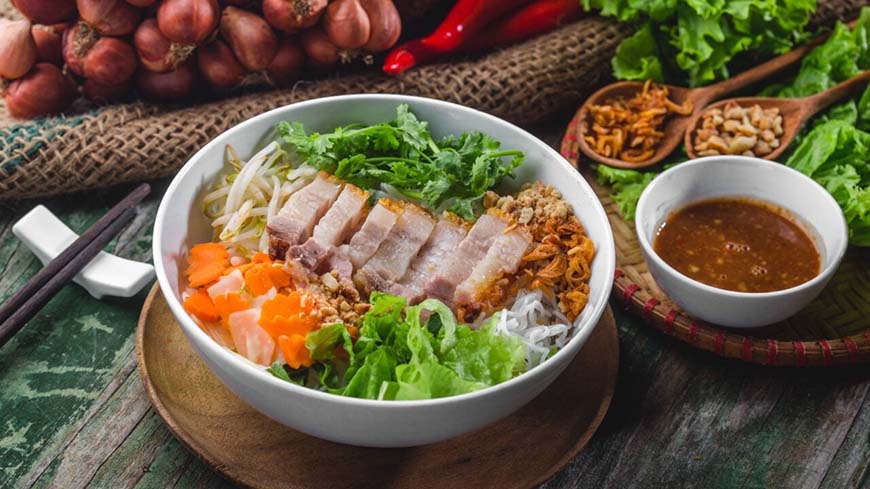
Mam nem ( anchovy paste) - one of the specialties of the Central region
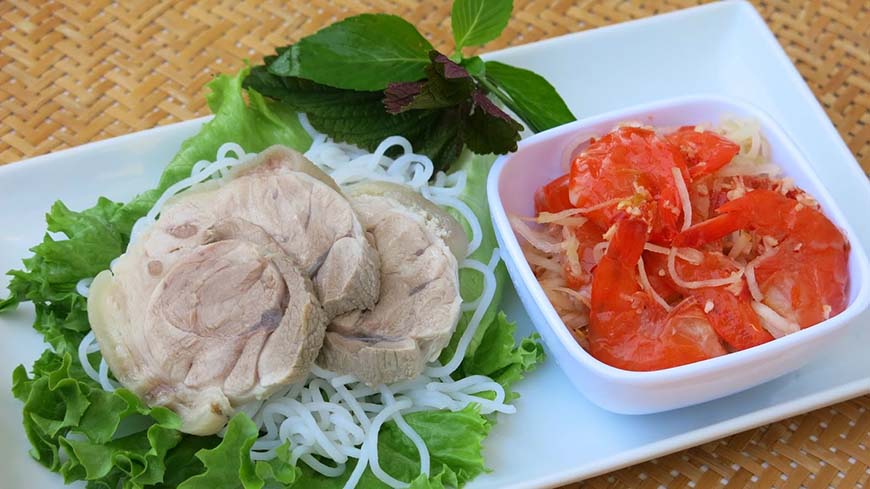
Sour shrimp - a must-try dipping dish when coming to Hue
The central regions of Vietnam are surrounded by long and narrow terrain, with mountains on one side and coastal areas on the other. That’s why local habitants make use of various seafood as indispensable ingredients in their meals. “Don” (pronounced as [zon]) and mussels which are brackish water mollusks are very popular in daily life cuisine of the Central region. They are as small as the fingertip, so it takes a lot of effort to catch them. Local people have to soak themselves in water for a long time with specialized tools. Don is from the same family as mussels, so it looks a lot like mussels, but Don is longer and has a softer shell. After catching Don, they have to do some laborious preliminary processing to get the tiny don's meat. It takes 3 hours to get a pot of Don’s meat, so they often eat it with other ingredients such as rice paper, scallions, onions. Before enjoying the hot bowl of don, people often add a few fresh chili peppers inside and add 1-2 teaspoons of ground chili, because without chili, they will eat up all the Don very quickly. Then, Don became a specialty of many central provinces. But because the source of ingredients is not much, the way to catch and process it is all manual, the habit of giving a lot of chili when eating don of the Central people remains unchanged. If you have the opportunity to travel to Central Vietnam, remember to enjoy this hot and delicious Don soup.
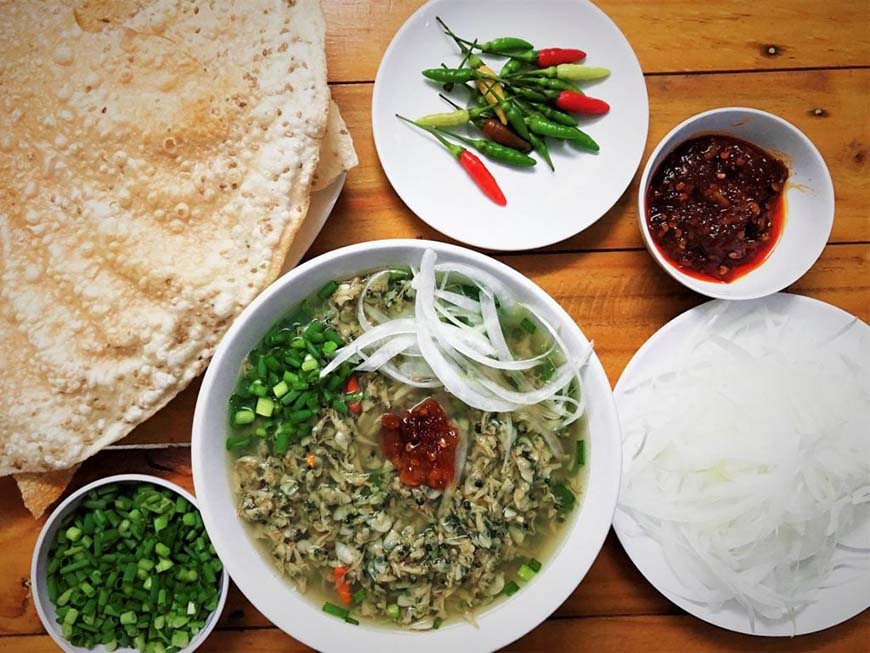
Enjoy the hot, spicy Don soup
The central provinces such as Hue, Da Nang, Quang Nam, Binh Dinh, Binh Thuan are very famous for sour shrimp paste (mắm tôm chua) and shrimp paste (mắm ruốc). In particular, Hue cuisine is influenced by the royal culinary style, so it is very sophisticated in preparation and presentation. On the other hand, because the locality does not have many ingredients and royal cuisine requires a large number of dishes, each type of ingredient is processed in a variety of ways and used in many different dishes.
2. Distinctive features of the cuisine of each region in Central Vietnam
Stretching along the narrow terrain of the hard-working central region, each region's cuisine has its own characteristics, which cannot be mixed with other regions and tourists can only enjoy it when coming there. We have to mention first:
Hue cuisine
Talking about Central cuisine, it is impossible not to mention Hue cuisine. A meal of the Hue people seems to have all the yin and yang, the five elements with a natural harmony between the nature, taste, and color of the dishes.
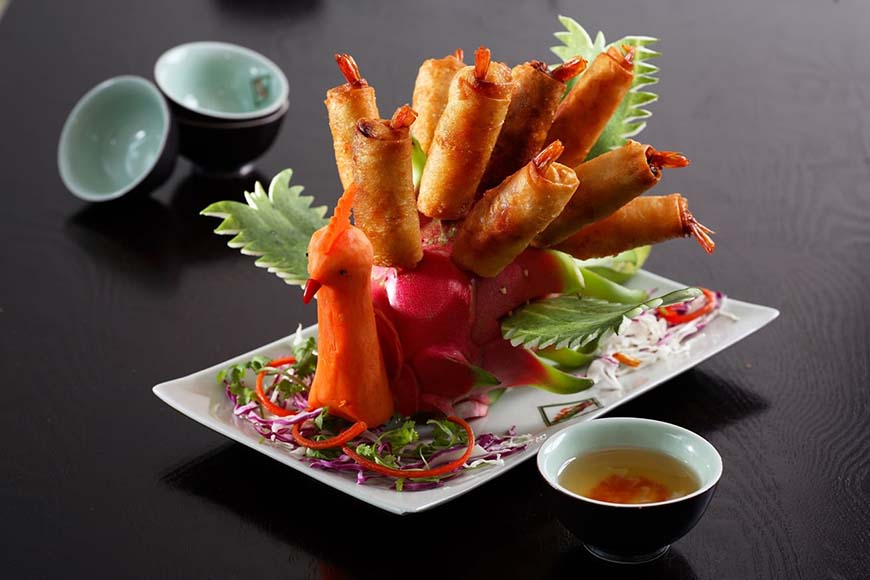
Nem cong (peacock spring rolls) - one of the dishes of Hue royal cuisine
Hue is the ancient capital, so each Hue dish is a sophisticated process from the selection of ingredients and the preparation to the decoration and enjoyment of the dish. Hue royal cuisine is one of the most typical features of the central culinary culture.The dishes in the palace at that time were only spent for the kings of the Nguyen dynasty, so they were very picky about the processing and decoration. Each dish is a delicious delicacy, meticulously cooked to achieve the highest standards of being both beautiful and delicious, but equally nutritious. Therefore, the dishes in each royal meal are not only prepared by the chef, but also by the royal physician to ensure the perfect combination of ingredients.
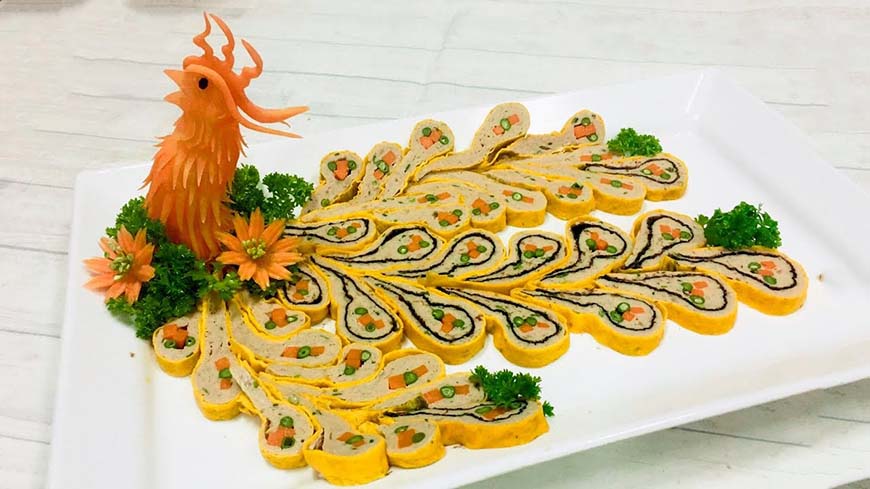
Cha Phuong - A dish is prepared elaborately
Hue royal cuisine carries a lot of rules and rituals from food supply, processing, serving, types of tables, dishes, and chopsticks. Each meal that the king ate must be from thirty-five to fifty dishes, in which there must be peacock roll, ox skin, bear's hand, venison, bird's nest…
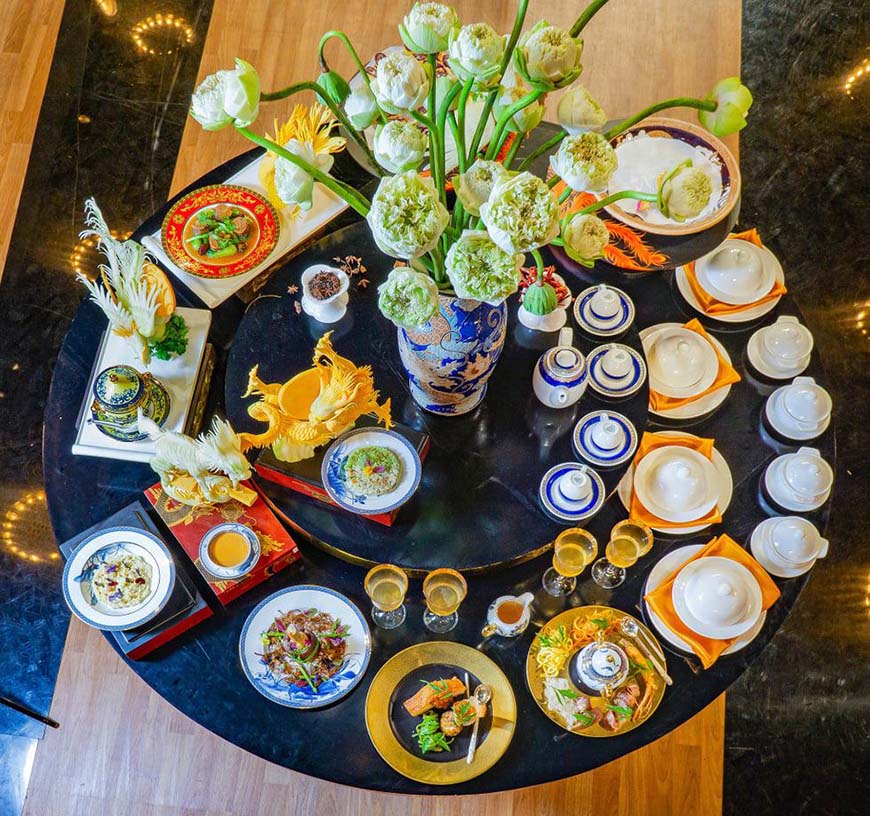
Hue royal cuisine is very rich and diverse
The dishes of the Hue royalty, at first, were passed down from generation to generation. Later, when the ministers returned from their homeland, they often offered to the king strange and delicious dishes, the special dishes of which will be listed and passed on to the next generation. Gradually, the Hue royal cuisine became richer and more diverse.
Contrary to the sophistication of Hue royal cuisine, the casual dishes are attracted by the rustic, simple but also as rich as the affection of Hue people for each visitor coming to this place. One of the typical popular dishes of Hue that we cannot ignore when coming to Hue is mussel rice. Mussel rice is special because it carries "Hue soul". It is not as famous throughout the country as Bun Bo Hue, the taste hasn't changed to suit the taste of many regions. That’s why mussel rice is the quintessential dish of the ancient capital. If this dish is not processed according to Hue style, it will lose its original taste and value. Each ingredient, each step in the processing as well as the way to enjoy this dish of Hue people also carries certain meanings.
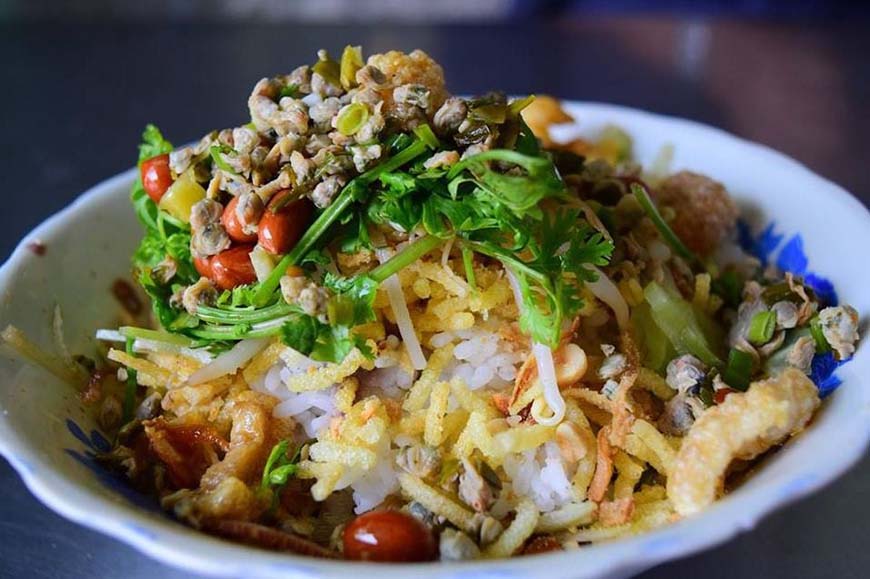
Mussel rice - the dish carries “ Hue soul”
To make the delicious mussel rice, mussels are one of the most important ingredients. The best mussels must be caught in the section of the Perfume River flowing through the Hen dune. The people there often catch mussels in the early morning and then move them to restaurants. People often have to soak mussels in rice water to release the sandy soil, then boil to separate easily meat and broth. After that, it's time to prepare the rice. The rice to make this dish must be the cold rice left overnight, the grains of rice are separated, even rice cooked for this dish is also a type of dry rice. This special ingredient comes from the thrift of Hue people because they don’t want to waste any grain of rice. The cold rice dish seems to be dry and difficult to eat, but when eating with hot mussel soup, it blends in strangely, the rice grains are also not broken.
After pre-processing, mussels are fried in a hot pan with rice vermicelli, dried bamboo shoot and bacon until just cooked , then stop frying them to avoid mussels being tough. The mussel broth is heated, added with a few branches of ginger and seasoned to elevate the taste. Mussel rice dish is also served with chili sauce, chili pickled with fish sauce, fish sauce, shredded rice paper, peanuts with oil, roasted sesame, crispy pork skin, fried pork fat… that’s enough for the taste. However, one more side dish is still missing, which is raw vegetables. Without raw vegetables, this dish will lose its delicious taste because the acrid, sour, pungent, numb, cool taste of banana flower, longan, herbs, star fruit and pineapple will make the taste of the mussel rice bowl become harmonious.
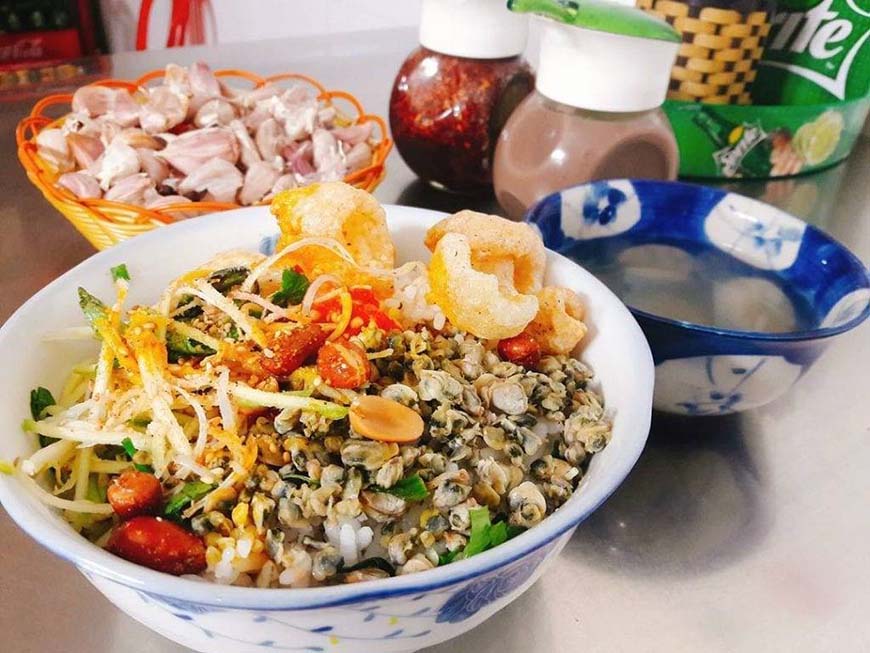
Mussel rice dish is rustic, simple but extremely delicious and attractive
The day before the Hue people spread the tray to serve guests, the host often brought a dozen ingredients to serve on separate small crockery plates. Nowadays, it's less fussy, the women selling mussel rice will take a large bowl and then scoop the cold rice into it, then shovel the fried mussels to cover the rice, then take turns to arrange other things like rice paper, pork skin, ground peanuts, roasted sesame, fried pork fat on top and sprinkle a spoonful of fish sauce and raw vegetables are placed on top. A bowl of mussel broth, the color of fragrant rice water, with a smoky aroma, will be placed next to it. Mussel rice must be eaten spicy to be delicious, a spicy bite awakes the taste, a sip of water freshens up the mind.. What a delicious dish that makes travelers remember forever when they have to say goodbye to dreamy Hue.
Quang Nam cuisine
Quang Noodle is the typical dish of Quang Nam that shows the habit of eating full and eating boldly of the Central region. Like its name, Quang Noodle was born from the land of Quang Nam. Noodles are usually made of rice flour and coated in thin layers, then sliced horizontally to have thin noodles. Under the noodles are raw vegetables, above are lean pork, shrimp, chicken along with broth stewed from pork bones. People often add crushed dried roasted peanuts, finely chopped scallions, herbs, green peppers or red peppers. The broth is very little and flavorful. Diners can mix more raw vegetables or grilled rice paper. This is a special dish used to serve guests, to introduce the culture of the Quang people. Although the broth is not as much as Pho in the North, it is very sweet and flavorful.
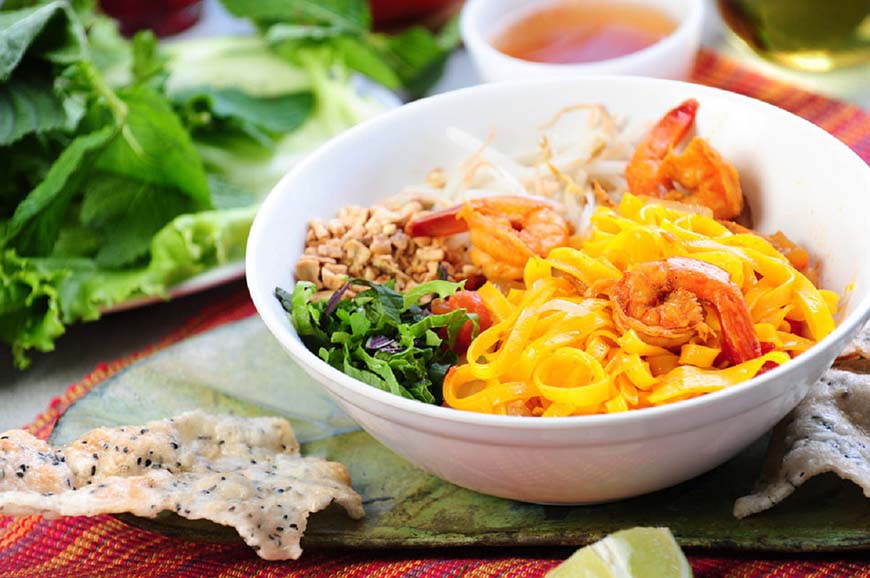
Quang noodles - Hoi An's specialty dish
In addition, when coming to Hoi An, you cannot ignore the Cao Lau (a pork noodle dish). When you walk around the ancient town, you will see the ancient restaurants and the name “Cao Lau” in the menu placed in front of the door. Cao Lau has long been mentioned as a typical dish that contributes to the culinary soul of Hoi An town. Like Quang noodles, Cao Lau is eaten with very little broth. A special feature of Cao Lau is that the noodles are yellow because they are mixed with ashes of Melaleuca firewood, taken from the land of Cu Lao Cham. This dish is eaten with shrimp, pork and raw vegetables. Visitors arriving in Hoi An will feel the small and ancient ambiance there, then enjoy a bowl of hot, fragrant Cao Lau, to enjoy a part of the taste of a quintessential ancient land of Vietnam.
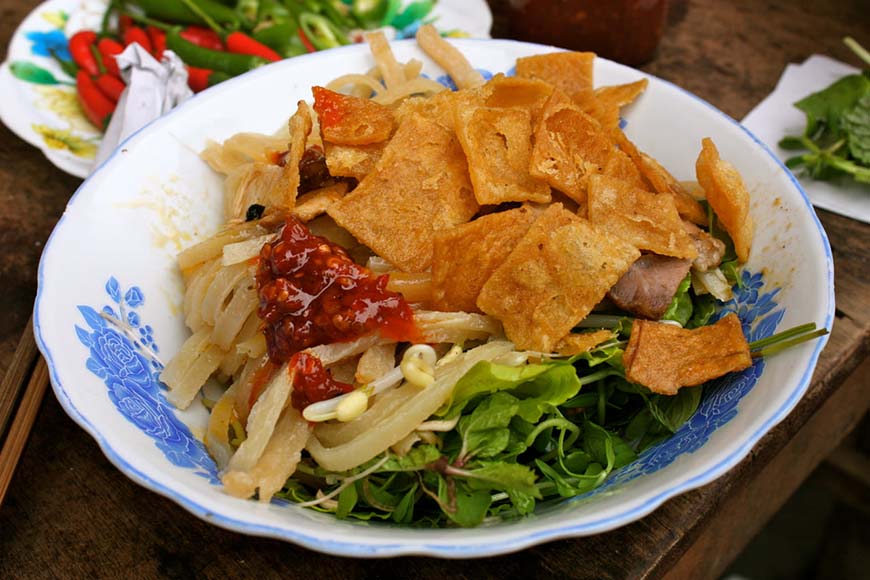
Coming to Hoi An, visitors cannot ignore the specialty Cao Lau
Thanh Hoa is not only famous as a land of talented people, but also famous for many well-known dishes in the country. One of the extremely famous dishes of Thanh Hoa that people often remember when mentioning this province is Nem chua (fermented pork roll). The reason this dish is so special is because it has existed for a long time. Over time, this traditional dish was created by Thanh Hoa people with different preparation and eating habits.
Ingredients to make this dish include pork, pork skin, powdered grilled rice, spices, cloves, garlic, chili and banana leaves for wrapping. The spices and pork skin will be mixed together first, and the pork will be added to stir later. If you want to make delicious “nem chua”, ensure that the selection of pork is very important. Pork must be delicious, fresh and new, so when making “nem chua”, they will not be watery and moldy. Carefulness and meticulousness in each step are required to make the perfect fermented rolls.
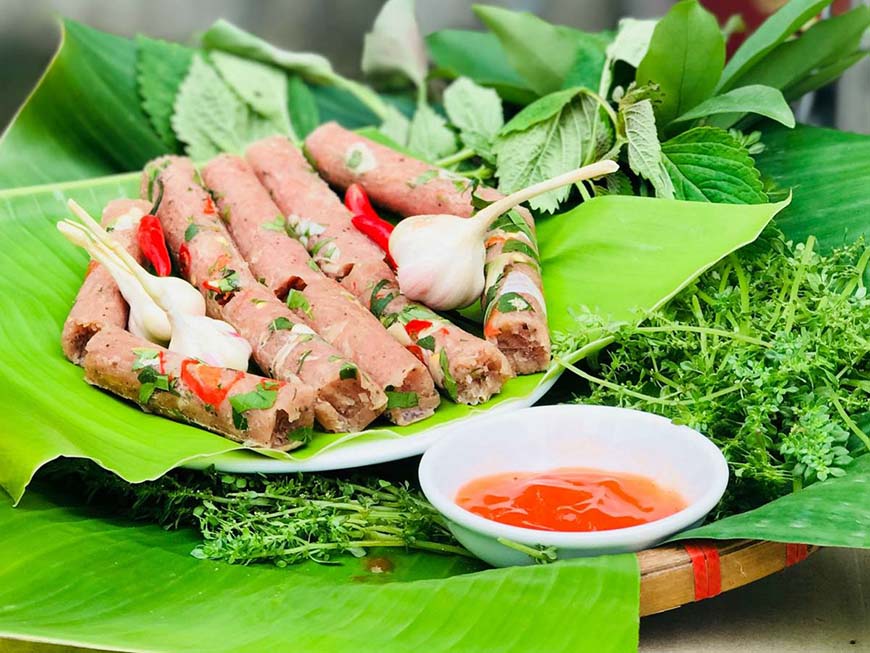
Nem chua Thanh Hoa
Nem chua is not only a traditional dish used in important holidays but also a gift for friends near and far when coming to Thanh Hoa countryside. Enjoying Nem chua Thanh Hoa even once is enough to make you remember that delicious taste forever.
Da Nang cuisine
Da Nang city has long been considered a livable city and a famous tourist city of Vietnam. One of the factors that make up the success of Da Nang's tourism development is the street food that attracts many tourists. One of them must be the famous Da Nang crispy pancakes (Banh Xeo). Although many people have never been to Da Nang to enjoy original “Banh Xeo”, this dish is no longer strange for young people and the people loving streetfood.
Pancake is made from milled rice flour mixed with egg yolk and turmeric powder and fried on a hot pan to make it crispy and greasy. The filling is made from shrimp, minced pork belly mixed with fat and fresh bean sprouts. This pancake is usually wrapped in a thin layer of rice paper along with raw vegetables such as lettuce, young leaf mustard, basil, green banana to drown out the fat taste. When enjoying Banh Xeo, you will feel the crunchiness and fat of the crust, the aroma of shrimp and meat mixed with sweet and sour garlic fish sauce, which is extremely ecstatic.
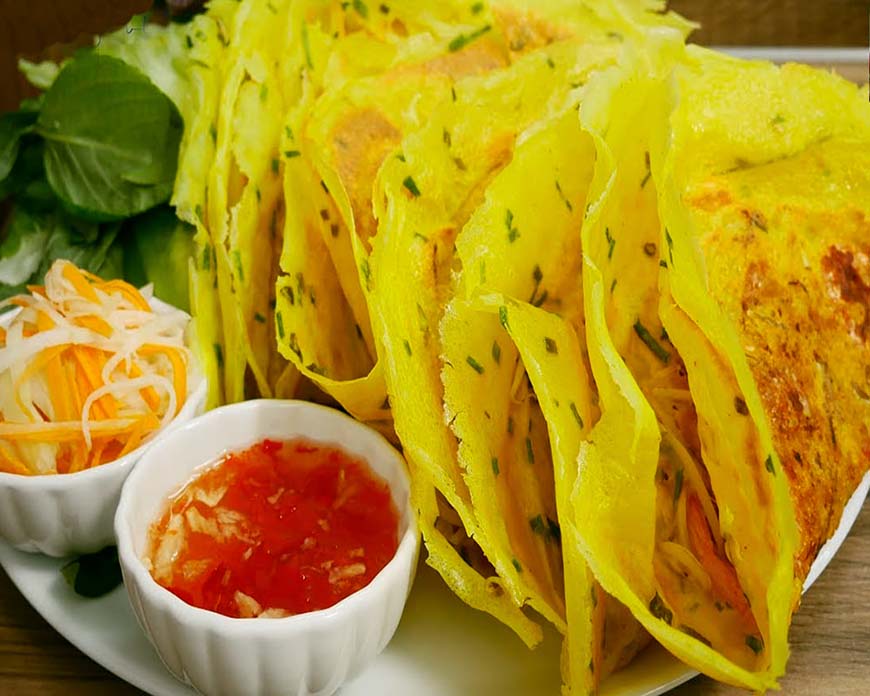
Banh Xeo Da Nang - a favorite snack of young people
Another simple, rustic but still attractive dish that we cannot help but mention when enjoying the cuisine of Da Nang is Banh Beo. This is a rustic dish made from rice flour mixed with shrimp meat. Although it is very simple, it is a favorite snack of many visitors when coming to Da Nang. Rice for making Banh Beo is the yellow flower sticky rice that is carefully selected and then finely ground, mixed with boiling water, and mixed until it becomes a smooth ball. Shrimp is cleaned, cut into pieces to make the filling of Banh Beo. The filling is usually marinated with spices for a while to infuse and then dried on embers until the fishy smell of seafood is eliminated. When eating, the diners will only feel the aroma and greasy taste of this dish.
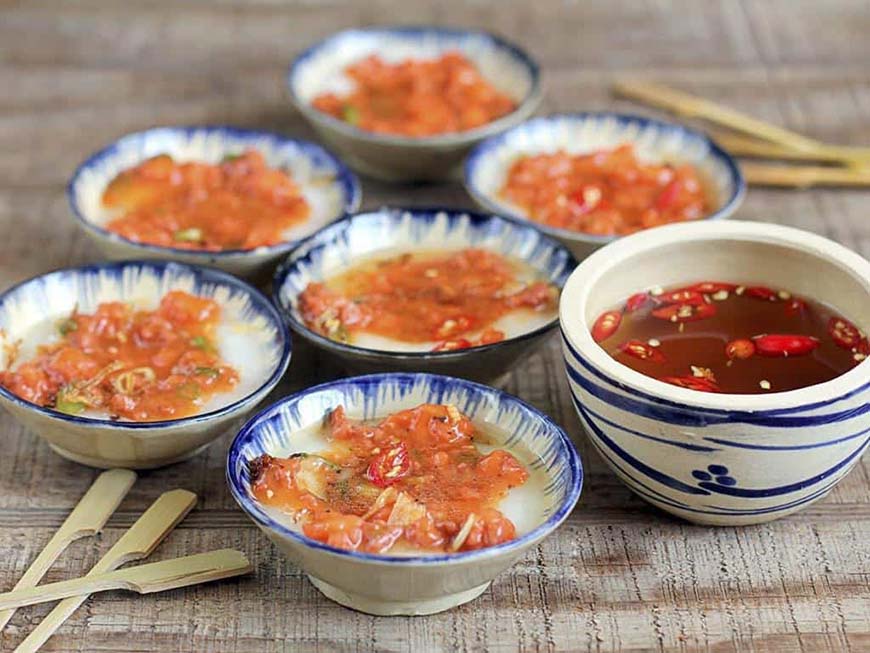
Banh beo - a simple dish of Da Nang people
What makes the difference in Da Nang's banh beo is the dipping sauce. If Hue’s banh beo is served with fried shrimp and fish in a small bowl, Southern banh beo is served with pureed green beans, Da Nang's banh beo is a bit more interesting when served with shrimp sauce or chili garlic sauce sprinkled on top. Banh beo is not only a favorite dish of Da Nang people but also of domestic and foreign tourists when coming to this place.
~~~~~
Stay in touch with Mr Linh's Adventures for more interesting information about Vietnamese culture
Published on Oct 8th, 2021
Translated by Lan Anh, intern at Mr Linh's Adventures